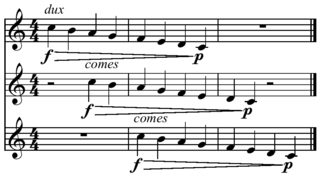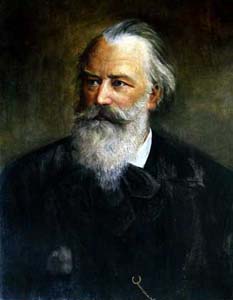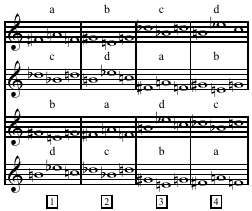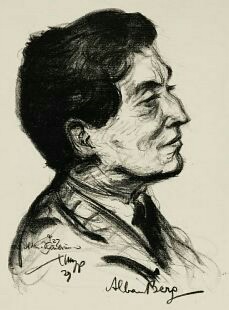Related Research Articles

John Milton Cage Jr. was an American composer and music theorist. A pioneer of indeterminacy in music, electroacoustic music, and non-standard use of musical instruments, Cage was one of the leading figures of the post-war avant-garde. Critics have lauded him as one of the most influential composers of the 20th century. He was also instrumental in the development of modern dance, mostly through his association with choreographer Merce Cunningham, who was also Cage's romantic partner for most of their lives.

Henry Dixon Cowell was an American composer, writer, pianist, publisher, teacher and the husband of Sidney Robertson Cowell. Earning a reputation as an extremely controversial performer and eccentric composer, Cowell became a leading figure of American avant-garde music for the first half of the 20th century — his writings and music serving as a great influence to similar artists at the time, including Lou Harrison, George Antheil, and John Cage, among others. He is considered one of America's most important and influential composers.

Quatuor pour la fin du Temps, originally Quatuor de la fin du Temps, also known by its English title Quartet for the End of Time, is an eight-movement piece of chamber music by the French composer Olivier Messiaen. It was premiered in 1941. The work is scored for clarinet, violin, cello, and piano; a typical performance of the complete work lasts about 50 minutes. Messiaen wrote the piece while a prisoner of war in German captivity and it was first performed by his fellow prisoners. It is generally considered one of his most important works.
A tone cluster is a musical chord comprising at least three adjacent tones in a scale. Prototypical tone clusters are based on the chromatic scale and are separated by semitones. For instance, three adjacent piano keys struck simultaneously produce a tone cluster. Variants of the tone cluster include chords comprising adjacent tones separated diatonically, pentatonically, or microtonally. On the piano, such clusters often involve the simultaneous striking of neighboring white or black keys.

In music, a canon is a contrapuntal (counterpoint-based) compositional technique that employs a melody with one or more imitations of the melody played after a given duration. The initial melody is called the leader, while the imitative melody, which is played in a different voice, is called the follower. The follower must imitate the leader, either as an exact replication of its rhythms and intervals or some transformation thereof. Repeating canons in which all voices are musically identical are called rounds—familiar singalong versions of "Row, Row, Row Your Boat" and "Frère Jacques" that call for each successive group of voices to begin the same song a bar or two after the previous group began are popular examples.

4′33″ is a modernist composition by American experimental composer John Cage. It was composed in 1952 for any instrument or combination of instruments; the score instructs performers not to play their instruments throughout the three movements. It is divided into three movements, lasting 30 seconds, two minutes and 23 seconds, and one minute and 40 seconds, respectively, although Cage later stated that the movements' durations can be determined by the musician. As indicated by the title, the composition lasts four minutes and 33 seconds and is marked by a period of silence, although ambient sounds contribute to the performance.

The Clarinet Sonatas, Op. 120, Nos. 1 and 2, are a pair of works written for clarinet and piano by the Romantic composer Johannes Brahms. They were written in 1894 and are dedicated to the clarinetist Richard Mühlfeld. The sonatas stem from a period late in Brahms's life where he discovered the beauty of the sound and tonal colour of the clarinet. The form of the clarinet sonata was largely undeveloped until after the completion of these sonatas, after which the combination of clarinet and piano was more readily used in composers’ new works. These were the last chamber pieces Brahms wrote before his death and are considered two of the great masterpieces in the clarinet repertoire. Brahms also produced a frequently performed transcription of these works for viola with alterations to better suit the instrument.

Composition for Four Instruments (1948) is an early serial music composition written by American composer Milton Babbitt. It is Babbitt's first published ensemble work, following shortly after his Three Compositions for Piano (1947). In both these pieces, Babbitt expands upon the methods of twelve-tone composition developed by Arnold Schoenberg. He is notably innovative for his application of serial techniques to rhythm. Composition for Four Instruments is considered one of the early examples of “totally serialized” music. It is remarkable for a strong sense of integration and concentration on its particular premises—qualities that caused Elliott Carter, upon first hearing it in 1951, to persuade New Music Edition to publish it.
Indeterminacy is a composing approach in which some aspects of a musical work are left open to chance or to the interpreter's free choice. John Cage, a pioneer of indeterminacy, defined it as "the ability of a piece to be performed in substantially different ways".
Music of Changes is a piece for solo piano by John Cage. Composed in 1951 for pianist and friend David Tudor, it is a ground-breaking piece of indeterminate music. The process of composition involved applying decisions made using the I Ching, a Chinese classic text that is commonly used as a divination system. The I Ching was applied to large charts of sounds, durations, dynamics, tempo and densities.
Cheap Imitation is a piece for solo piano by John Cage, composed in 1969. It is an indeterminate piece created using the I Ching and based, rhythmically, on Socrate by Erik Satie.

Sonatas and Interludes is a cycle of twenty pieces for prepared piano by American avant-garde composer John Cage (1912–1992). It was composed in 1946–48, shortly after Cage's introduction to Indian philosophy and the teachings of art historian Ananda K. Coomaraswamy, both of which became major influences on the composer's later work. Significantly more complex than his other works for prepared piano, Sonatas and Interludes is generally recognized as one of Cage's finest achievements.

Etudes Australes is a set of etudes for piano solo by John Cage, composed in 1974–75 for Grete Sultan. It comprises 32 indeterminate pieces written using star charts as source material. The etudes, conceived as duets for two independent hands, are extremely difficult to play. They were followed by two more collections of similarly difficult works: Freeman Etudes for violin (1977–90) and Etudes Boreales (1978) for cello, or piano, or both together.
String Quartet in Four Parts is a string quartet by John Cage, composed in 1950. It is one of the last works Cage wrote that is not entirely indeterminate. Like Sonatas and Interludes for prepared piano (1946–48) and the ballet The Seasons (1947), this work explores ideas from Indian philosophy.
American avant-garde composer John Cage (1912–1992) began composing pieces for solo prepared piano around 1938–40. The majority of early works for this instrument were created to accompany dances by Cage's various collaborators, most frequently Merce Cunningham. In response to frequent criticisms of prepared piano, Cage cited numerous predecessors. In the liner notes for the very first recording of his most highly acclaimed work for prepared piano, Sonatas and Interludes, Cage wrote: "Composing for the prepared piano is not a criticism of the instrument. I'm only being practical." This article presents a complete list of Cage's works for prepared piano, with comments on each composition. All of Cage's indeterminate works for unspecified forces can also be performed on or with Prepared Piano.

The Kammerkonzert für Klavier und Geige mit 13 Bläsern is a piece of chamber music composed by Austrian composer Alban Berg. It was composed between 1923 and 1925. The short score was completed on 9 February 1925; the full score was finished on 23 July 1925. The work was premiered on 19 March 1927.
The Seasons is a ballet with music by John Cage and choreography by Merce Cunningham, first performed in 1947. It was Cage's first piece for orchestra and also the first to use what Cage later called the gamut technique, albeit in an early form.
Construction is the title of several pieces by American composer John Cage, all scored for unorthodox percussion instruments. The pieces were composed in 1939–42 while Cage was working at the Cornish School of the Arts in Seattle, Washington, and touring the West Coast with a percussion ensemble he and Lou Harrison had founded. The series comprises three Constructions. A piece titled Fourth Construction, mentioned in several sources, is apparently either an unfinished work from 1942 or, more likely, an early title of the work we now know as Imaginary Landscape No. 2 .
A melodic line that is the reverse of a previously or simultaneously stated line is said to be its retrograde or cancrizans. An exact retrograde includes both the pitches and rhythms in reverse. An even more exact retrograde reverses the physical contour of the notes themselves, though this is possible only in electronic music. Some composers choose to subject just the pitches of a musical line to retrograde, or just the rhythms. In twelve-tone music, reversal of the pitch classes alone—regardless of the melodic contour created by their registral placement—is regarded as a retrograde.
David Nicholls is a British musicologist and composer.
References
- Duckworth, William. Talking Music: Conversations with John Cage, Philip Glass, Laurie Anderson, and Five Generations of American Experimental Composers. Da Capo Press, 1999. ISBN 0-306-80893-5
- Kostelanetz, Richard. Conversing with John Cage. Routledge, 2003. ISBN 0-415-93792-2
- Nicholls, David. American Experimental Music, 1890–1940. Cambridge University Press, 1990. ISBN 0-521-42464-X
- Nicholls, David. The Cambridge Companion to John Cage . Cambridge University Press, 2002. ISBN 0-521-78968-0
- Pritchett, James. The Music of John Cage. Cambridge University Press, 1993. ISBN 0-521-56544-8